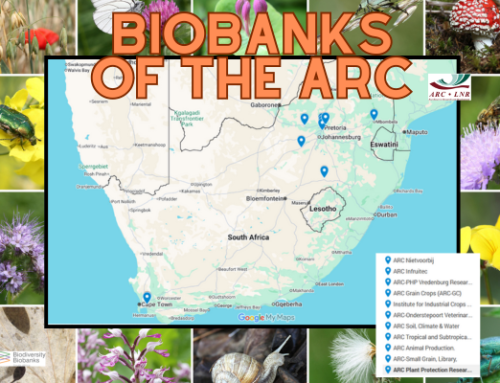A Rose, By Any Other Name: Why Taxonomy Matters
South Africa is known for its big game and other wildlife which attracts millions of tourists every year, boosting the economy and creating hundreds of thousands of jobs. But there’s more to the country than just the Big Five. Three of the world’s global biodiversity hotspots, recognised on the basis of levels of endemism and also their threatened status, are located in South Africa.
“South Africa is considered to be one of the world’s megadiverse countries,” notes Professor Michelle Hamer, project lead of the Biodiversity Biobanks South Africa (BBSA). “Our exceptionally rich and unique biodiversity offers many economic opportunities, and the potential for research, innovation and discovery in a wide range of fields and sectors that has the potential to change lives – and the world.”
But just how diverse is it? Well, before we can count, we have to know what we’re counting. That’s why basic science matters – and particularly the basic science of taxonomy and systematics.

When it comes to biodiversity, South Africa isn’t just diverse…it’s megadiverse.
Taxonomy is about the classification of living (and once-living) organisms – taxonomists document, catalogue, describe and name species (as well as genera, families, kingdoms – you get the idea). They study (and name) ducks, dinosaurs, daisies – and more.
Systematics is the study of the diversification of living forms, both past and present, and the relationships among living things through time. It’s the science of how organisms are related, how they’ve evolved, and what we can learn from that.

BBSA biobanks have all kinds of samples, from land, sea and even sky.
“The biobanks are, in a sense, alive,” Prof Hamer explains. “There are gene banks that store materials like seeds; tissue cultures of crop plants; cultures of microbes (bacteria, fungi, viruses); sperm and eggs from animals; tissue samples and extracted DNA that are kept frozen. So by studying these materials, we can develop a strong understanding of how biodiversity in South Africa has evolved – and is still evolving.”
The BBSA Way: Big Science For A Big Vision
Established as part of the Department of Science & Innovation’s Research Infrastructure Roadmap (SARIR) and co-ordinated by the South African National Biodiversity Institute (SANBI), the BBSA provides a coordinating structure across several of South Africa’s biodiversity biobanks. The samples held in these biobanks are essential to taxonomic and systematic pursuits.
That includes understanding the origins and diversification of life on earth, understanding genetic change and its significance, identifying the genetic basis for adaptive traits that are useful for crop, livestock, fish and wildlife breeding programmes, and much more.
The vision of the BBSA is about securing and exploring South Africa’s biodiversity – and enabling and supporting basic science, with the main aim of increasing the range and quality of samples stored and/or distributed, and increasing and improving access for research and development
“We all need to work together to protect our biodiversity and use it in a sustainable way that contributes to the country and its people. Biodiversity biobanks play a role in this agenda, and by contributing to expanding the holdings, and sharing materials we can work more effectively and efficiently. The biobanks must be seen as national assets and resources to be used for meaningful research, capacity development and product development in the interests of all.”
As SANBI CEO Mr Shonisani Munzhedz noted at the launch of the BBSA: “Our understanding of biodiversity affects our understanding of the arts, culture, health, technology, sport and more. The way we manage our biodiversity affects our economy, our environment, and our society. And we can’t manage what we don’t know. So the work done by the BBSA is of the utmost importance.”
Want to know more about the Biodiversity Biobanks South Africa? Find out here. Or read about how BBSA biobanks are improving lives in South Africa. And while you’re at it, why not learn more about what biobanks are (and aren’t) all about?

What are biodiversity biobanks?
Biodiversity biobanks are repositories of biologically relevant resources, including reproductive tissues such as seeds, eggs and sperm, other tissues including blood, DNA extracts, microbial cultures (active and dormant), and environmental samples containing biological communities….






